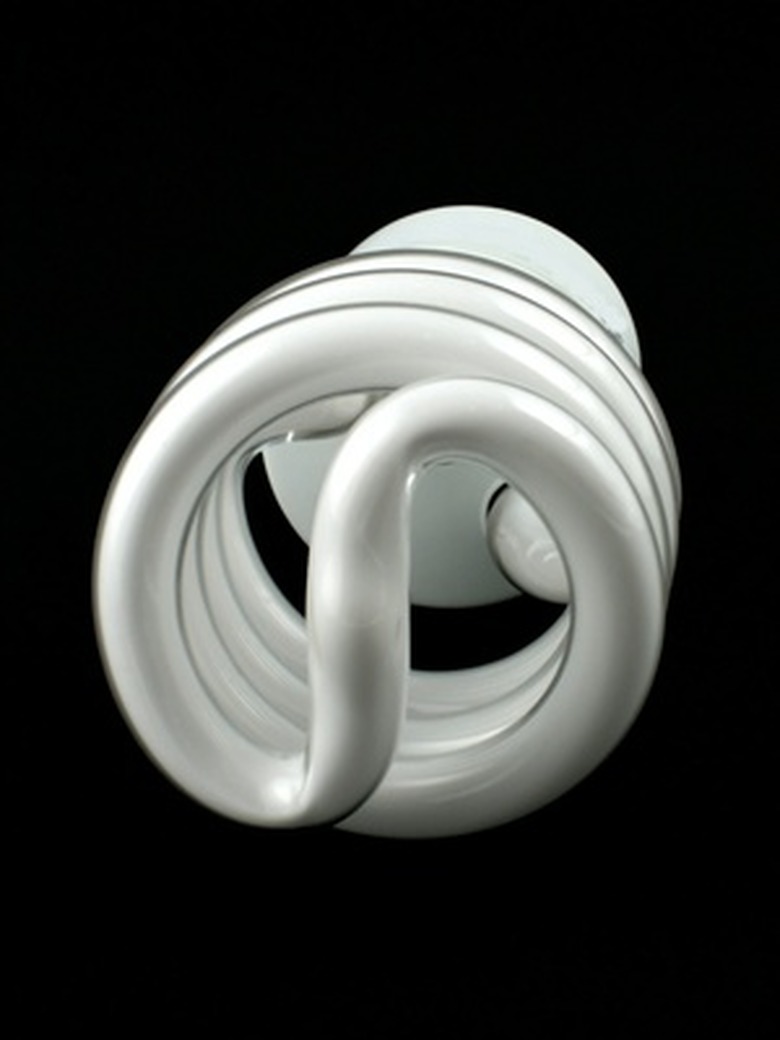Electronic Ballasts Vs. Magnetic Ballasts
Fluorescent light bulbs use an arc of electricity to create light. This current must be applied in very precise ways to the gases within the bulb–normal household electrical current is too erratic and powerful for the fluorescent bulb. So the bulb comes with a control device known as the ballast, which limits the current and meters it out in cycles that the bulb needs to keep lit. There are two kinds of ballasts, the newer electric versions and the older magnetic versions.
Electronic Ballasts
Electronic Ballasts
Electronic ballasts use circuits to control the flow of current. These use a magnetic output transformer, an EMI filter, a rectifier and integrated circuitry to manage the flow of current very precisely. These ballasts are smaller and lighter than magnetic versions.
Magnetic Ballasts
Magnetic Ballasts
Magnetic ballasts are older devices that use a magnetic transformer made of a steel core and copper windings, along with a simple bi-metal switch for thermal protection and a simple capacitor. They are larger and heavier than electric ballasts.
Efficiency
Efficiency
Electric ballasts can control the current flow more efficiently than magnetic versions. Magnetic versions can only maintain a current of around 60 hertz, which can cause flickering in the bulb. Electric ballasts can double that to 120 hertz, making more efficient use of the power provided and avoiding any problems associated with flickering fluorescent light. This makes electric ballasts more popular in homes.
Costs
Costs
Magnetic ballasts tend to be much easier to make than electric ballasts, so they have lower costs. These low costs can be attractive to buyers who must supply ballast for a large number of fluorescent bulbs, but it comes with a cost. Magnetic ballasts also need to be replaced more often than electric versions, offsetting the upfront cost savings that buyers can make.
Applications
Applications
Magnetic ballasts do well with traditional, long-tube fluorescent lights used for everyday applications. However, fluorescent lights that dim, or compact fluorescent lights, often require electric ballasts. Magnetic ballasts simply do not have the capability to control current in specific ways necessary to dim a bulb or provide power to multiple bulbs at one time. The more complicated the application, the better the electric ballast will be.
Cite This Article
MLA
Lacoma, Tyler. "Electronic Ballasts Vs. Magnetic Ballasts" sciencing.com, https://www.sciencing.com/electronic-ballasts-vs-magnetic-ballasts-6671216/. 24 April 2017.
APA
Lacoma, Tyler. (2017, April 24). Electronic Ballasts Vs. Magnetic Ballasts. sciencing.com. Retrieved from https://www.sciencing.com/electronic-ballasts-vs-magnetic-ballasts-6671216/
Chicago
Lacoma, Tyler. Electronic Ballasts Vs. Magnetic Ballasts last modified March 24, 2022. https://www.sciencing.com/electronic-ballasts-vs-magnetic-ballasts-6671216/
